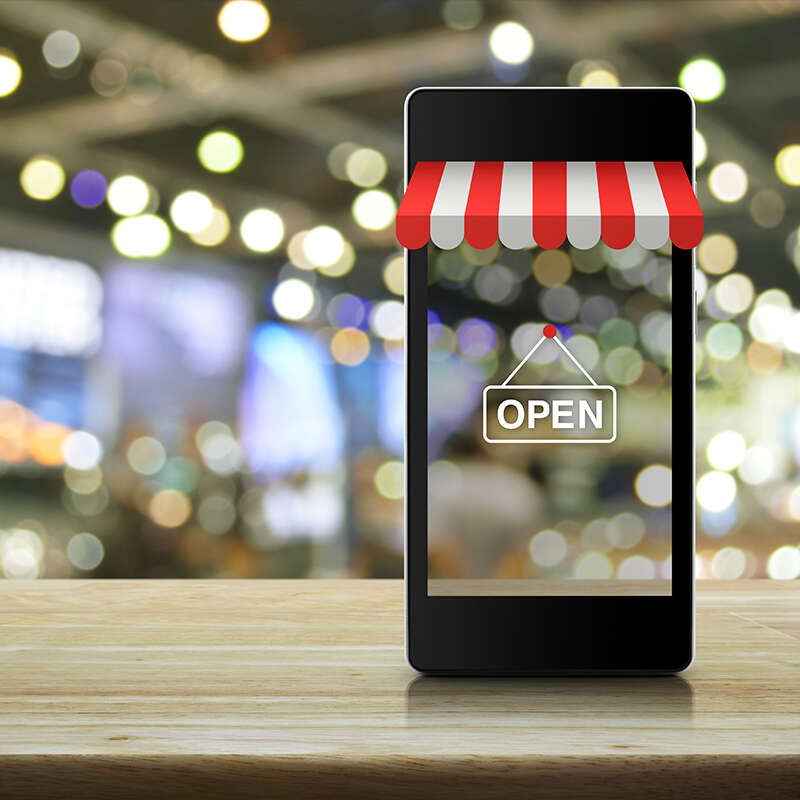Are Amazon and other similarly massive online retailers really driving the final nails into brick-and-mortar retailer's coffin?

Are Amazon and other similarly massive online retailers really driving the final nails into brick-and-mortar retailer's coffin, or is 2017 the year that appears to be the great, long awaited, market (and marketplace) “adjustment” to what has been going on for a decade? And, the reality is the marketplace is “over-stored” and most retailers are hopping on the the band-wagon started by some of the largest retail companies and finally adjusting store count, which is already nearing 5,000 closures announced this year. We all know misery loves company. Interestingly, at the same time major retailers scramble to shutter underperforming stores, Amazon is considering how to best open stores and enter the brick-and-mortar market.
It seems like every time you look at a business publication someone is prophesying the death of an industry. Be it TV, print media, advertising, or the aforementioned brick-and-mortar retailers, well-established industries are purportedly being added to the chopping block one by one as a result of online related disruption (In fact, I recall experts declaring the death of the executive search and recruiting industry several years ago due to online entrants like LinkedIn, Indeed, and others.)
But does this conclusion hold any water? "The Death of Brick-and-Mortar" is a far more catchy title than "Brick-and-Mortar Forced to Adapt Due to Online Retailer Popularity."
The truth, as is often the case, is much less either life or death than many would believe.
With the rise of the millennial generation's spending power, which, according to Accenture, is projected to grow to $1.4 trillion annually and represent 30% of total retail sales by 2020, online retailers have been able to carve out a sizeable portion of the retailing market (Amazon, in particular). This stands to reason since we're talking about a generation that has grown up with the conveniences of the internet and incorporates technology in some form into most of their buying decisions.
However, as big as Amazon has become, major retailers didn't become the bloated financial behemoth's they are today by staying in one place. Retailers have begun to adapt their stores to appeal to the increasing share of tech-savvy shoppers.
After all, there still are plenty of positives associated with brick-and-mortar locations that exclusively online retailers distinctly lack. Being able to physically see and feel the object you are buying and the ability to talk to an actual person when you have a question are just a couple of the obvious advantages physical locations have that they will need to exploit in order to remain competitive and relevant.
Apple is a perfect example of the best practices a physical retailer can strive towards since their newly designed stores are being positioned as communal spaces of sorts. Along with their traditionally inviting product displays and customer service "Genius Bars," they are now launching "Today at Apple" workshops that will help attendees perfect skills such as photo-editing, graphic design, and coding―among others―all free of charge. These workshops will give customers a reason to regularly commute to Apple’s physical locations beyond testing the new iPhone.
Other retailers are also developing innovative omnichannel techniques to stem the tide of digital retailers. Macy's, for instance, has implemented digital beacons around its stores that interact with your Macy's app and recommend products and sales you might be interested in as you walk by them in the store. Target implemented tablet kiosks in several of its stores to help customers find exactly what they're looking for. Countless retailers have also introduced BOPIS (buy online pickup in store) services that have achieved a lot of success in recent years.
It seems the constantly prophesied doom and gloom is less of an obituary for physical retail and more of a sign that big changes are coming for the retail landscape in general. If any lesson is to be learned from the decline and death of video rental services observed in the late 2000's, it's that you either adapt early or die a slow financial death. Based on the changes that have already been implemented, it’s reasonable to assume that large retail outlets have realized this fact and are taking big steps to retain their market share.
Regardless of how the "Retail War" shakes out over the coming years, I think we can all take solace in the fact that this healthy competition will inevitably be to the great benefit to us as customers since more free services and convenient means of shopping will become the new normal.




